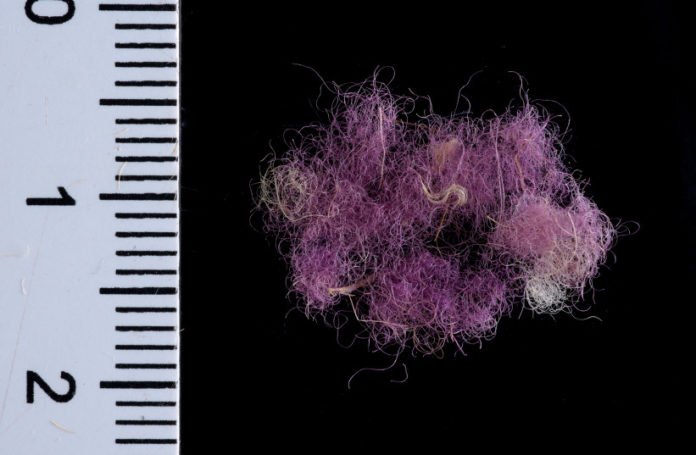

The color, a bright shade of purple, was extracted from mollusks
fished in the Mediterranean Sea through a very expensive process.
The special purple described in the Bible and worn by the kings of Israel, including David and Solomon, was recently identified on 3,000 year-old fragments of fabrics unearthed at the iconic site of Timna in the Negev.
“King Solomon made for himself the carriage; he made it of wood from Lebanon. Its posts he made of silver, its base of gold. Its seat was upholstered with purple, its interior inlaid with love” reads the third chapter of Song of Songs.
The purple – “argaman” – is mentioned in the Torah as the color of certain textiles used in the Mishkan (Tabernacle), and was also considered a status symbol of the elites in ancient societies in southern Levant.
The study was conducted by Dr. Naama Sukenik from the Israel Antiquities Authority and Prof. Erez Ben-Yosef from the Jacob M. Alkow Department of Archaeology and Ancient Near Eastern Cultures at Tel Aviv University, in collaboration with Prof. Zohar Amar, Dr. David Iluz and Dr. Alexander Varvak from Bar-Ilan University and Dr. Orit Shamir from the Israel Antiquities Authority. Its findings were published in the journal PLOS ONE on Thursday.
“We have been working on this project for several years,” Sukenik explained to The Jerusalem Post. “This study is very important for several reasons. First of all, remains carrying this color so often described in the Bible are rare, and this is the first time that we uncovered some dating back to the Iron Age.”
“The discovery also tells us more about the people who lived at Timna, offering us proof that upper class people resided there,” she added. “Purple was the color worn by the elites. While we cannot say who the fragments of fabrics we found belonged to, one thing is sure: if we had been able to open King David or King Salomon’s wardrobes, we would have found clothes dyed in this color.”
Because of the organic nature of the artifact uncovered, the scholars were able to perform the radiocarbon dating, which confirmed that the artifacts dated back to approximately 1000 BCE, the time when King David and King Solomon lived.
The color, a bright shade of purple [and almost exactly the color of the semi-precious stone amethyst], was extracted from mollusks fished in the Mediterranean Sea through a very expensive process. In the past, archaeologists had uncovered traces of production, such as empty shells and potsherds.
Scholars believe that three species were employed: the Banded Dye-Murex (Hexaplex trunculus), the Spiny Dye-Murex (Bolinus brandaris) and the Red-Mouthed Rock-Shell (Stramonita haemastoma).
A similar process was used also to obtain another color often mentioned in the Bible, azure (“tehelet”). The two colors were manufactured by exposing the raw materials to different shades of light.
Carrying out the new study, researchers worked to recreate the procedure to obtain the color, cracking mollusks to remove the raw material from the dye glands and performing hundreds of attempts.
“The practical work took us back thousands of years and it has allowed us to better understand obscure historical sources associated with the precious colors of azure and purple,” Amar, who was in charge of this specific part of the project, explained in a press release.
Ben-Yosef’s team has been working at Timna since 2013.
“In recent years, we have been excavating a new site inside Timna known as ‘Slaves’ Hill,’” the archaeologist said. “The name may be misleading, since far from being slaves, the laborers were highly skilled metalworkers. Timna was a production center for copper, the Iron Age equivalent of modern-day oil.
“Slaves’ Hill is the largest copper-smelting site in the valley and it is filled with piles of industrial waste such as slag from the smelting furnaces. One of these heaps yielded three scraps of colored cloth. The color immediately attracted our attention, but we found it hard to believe that we had found true purple from such an ancient period,” he added.
The professor believes Timna was part of the biblical Kingdom of Edom.
(JPost).





